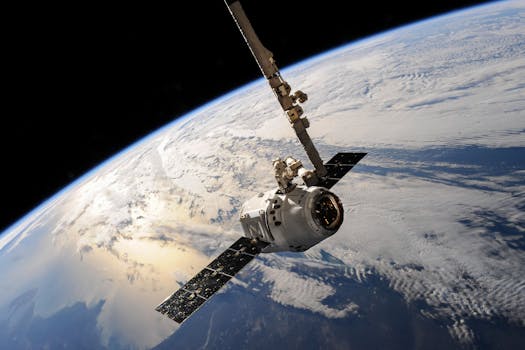MEO Satellites: Revolutionizing Global Communications with Medium Earth Orbit Technology – MEO Satellites

MEO Satellites: Revolutionizing Global Communications with Medium Earth Orbit Technology – MEO Satellites
MEO satellites, or Medium Earth Orbit satellites, are a type of satellite that operates in an orbit between 2,000 and 36,000 kilometers above the Earth’s surface. This orbit is lower than the Geostationary Orbit (GEO) used by many traditional satellites, but higher than the Low Earth Orbit (LEO) used by some newer satellite constellations. MEO satellites are designed to provide a unique combination of coverage, capacity, and latency, making them an attractive option for a wide range of applications, including telecommunications, navigation, and Earth observation.
MEO satellites have several advantages over traditional GEO satellites. One of the main benefits is their lower latency, which is the time it takes for a signal to travel from the Earth to the satellite and back again. Because MEO satellites are closer to the Earth, they offer latency as low as 10-20 milliseconds, compared to the 250-300 milliseconds experienced with GEO satellites. This makes MEO satellites ideal for applications that require real-time communication, such as video conferencing, online gaming, and remote healthcare.
How MEO Satellites Work
MEO satellites use a combination of advanced technologies to provide high-speed, low-latency communications. They are equipped with sophisticated antennas and transponders that allow them to receive and transmit signals to and from the Earth. The satellites are also equipped with propulsion systems that enable them to maintain their orbit and adjust their position as needed.
MEO satellites typically operate in a constellation, which is a network of satellites that work together to provide coverage over a specific region or the entire globe. Each satellite in the constellation communicates with the others to ensure seamless handovers and provide continuous coverage. This allows MEO satellites to provide a high level of redundancy and fault tolerance, making them highly reliable and resilient.
Applications of MEO Satellites
MEO satellites have a wide range of applications, including telecommunications, navigation, Earth observation, and scientific research. They are used to provide broadband internet access to remote and underserved communities, as well as to support critical infrastructure such as emergency response systems and financial networks.
MEO satellites are also used in the navigation sector, providing location information and timing signals to GPS receivers on the ground. They are used in Earth observation applications, such as weather forecasting, climate monitoring, and natural resource management. Additionally, MEO satellites are used in scientific research, such as studying the Earth’s atmosphere, oceans, and land surfaces.
Benefits and Challenges of MEO Satellites
The benefits of MEO satellites are numerous. They offer faster and more reliable connections than traditional GEO satellites, making them ideal for applications that require real-time communication. They also provide a high level of redundancy and fault tolerance, making them highly reliable and resilient.
However, MEO satellites also face several challenges. One of the main challenges is interference from other satellites and terrestrial systems, which can impact their performance and availability. They also require sophisticated technologies and complex systems to operate effectively, which can be costly and time-consuming to develop and deploy.






